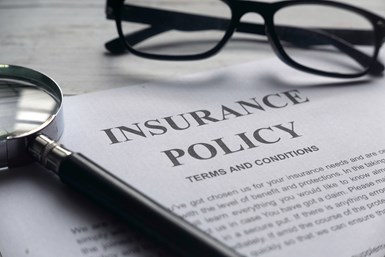In any facility with precision machine tools, there are many different moving parts required to run a smooth operation. Even with diligent management and thorough safety protocols in place, disaster can (and does) happen, whether it be natural (such as extreme weather events) or accidental (such as a fire). When an unplanned event causes a disruption, your primary goal as a manufacturing business owner is to resume operations as quickly as possible to save your business and your employee’s livelihoods. As such, you simply cannot afford to be bogged down in a drawn-out insurance claim process. By taking the steps necessary to plan for the unplanned, you can help your business successfully bounce back in the event of a catastrophe.
Here are six critical tips to financially protect your manufacturing business before, during and after disaster strikes.
Featured Content
1. Check Your Insurance Policy
One of the best ways to prepare for a disaster is to make sure your business and property are protected with proper insurance coverage. As your business constantly evolves, so do its insurance needs. This is why it is best to meet with your insurance provider twice per year to review coverage and policy limits. Regularly reviewing your policy and making updates and adjustments helps secure proper insurance coverage so you are not left underinsured in the event of an emergency. It’s important to remember that, following a disaster, the insurance carrier will only replace or rebuild property covered within your policy limits. If the policy is not up to date, you could be as much as 25% underinsured due to rising construction costs and annual inflation.

2. Understanding Different Coverages
In addition to regularly updating your insurance coverage, it is also important to review and be aware of your commercial business insurance policy and the common risks associated with your geographical region. For instance, if your property is located in a hurricane or fire-prone area, there are insurance coverages and endorsements you can include in your policy to help optimize your recovery.
One important item to review within your policy is a coinsurance clause. Many commercial policies state that the policyholder must insure a certain percentage of their company’s value. If a company is insured for less than the specified percentage, the policyholder and the insurance company will be considered co-insurers or joint insurers, leaving the policyholder to cover the difference in costs out of pocket.
When it comes to coinsurance, it is critical to understand the consequences of not abiding by the requirements of the policy. Coinsurance may make the recovery process more or less difficult, depending on your coverage. A public adjuster can review your policy and help identify any potential problems that could prevent you from obtaining a fair and just settlement.
3. Conduct Regular Equipment Maintenance
It is important to clean and conduct routine maintenance on high-tech equipment. Many mechanical issues and malfunctions can be avoided with proper care during its life span. Not only is it beneficial to the equipment itself but it can also benefit the policyholder during the insurance claim process.
After experiencing property damage or loss, the policyholder will file a claim with the insurance carrier who will deploy its forensics team on-site to scrutinize any damage and determine whether it was due to negligence, maintenance issues or wear and tear on the system. In some instances, policies may even have a protective safeguards endorsement that requires certain systems to be in working order and maintained or policy benefits can be denied. By properly caring for your precision machinery and equipment, and keeping records, you can negotiate the claim with the insurer to prove the damage is covered.
4. Keep Records
Before disaster strikes, it is beneficial to conduct a walkthrough of your property taking video and photos of buildings and structures, equipment and machinery, inventory, stock, contents and even landscaping. It’s best practice to save these videos and images to an online database that you can access from anywhere. When negotiating an insurance claim, these videos and images can be a saving grace.
With pre-disaster preparation such as checking your insurance coverage, conducting proper care for equipment, maintaining records and assembling a team, your business can anticipate a smooth recovery following a disaster.
Following a disaster, it is vital to preserve any records that will be relevant to the claim, including paper and electronic documents from the insurance carrier or mitigation team, security camera footage and even voicemail messages. Keeping thorough records is also beneficial when unseen damage is discovered. Sometimes water or smoke damage is not immediately noticeable after a disaster and you may need to bring in experts such as remediation specialists, industrial hygienists and public adjusters. The documentation you provide could make it easier to address unseen damage. With the help of your records, a public adjuster may be able to expedite your claim so your business can resume operations as quickly as possible.
5. Get Back to Business
When you experience a major loss and operations come to a halt, your main focus should be on getting operations up and running as soon as you can. There are different ways to recoup losses quickly and use extra expenses to fund temporary operations through business interruption insurance coverage. For instance, you can rent a new facility temporarily to restart operations or, depending on your area of industry, you may choose to partner with a competitor or transfer your contracts to them for third-party fulfillment. Both scenarios can help retain current clients and keep the business running throughout the recovery process. How you position yourself at the beginning of your insurance negotiation — especially regarding extra/expediting expenses — can dramatically impact the outcome of your settlement.
6. Establish Your Team of Trusted Advisors
Before the unimaginable happens, it is important to establish disaster response procedures and a designated list of trusted professionals who can launch into action and help with notifying the proper authorities, assessing damage and losses, and preparing and submitting your insurance claim. Your disaster response team should include an accountant, legal counsel, risk manager, trusted inspector(s) and a public adjuster. A public adjuster can take on the most time-consuming parts of the claims process and negotiate with your insurance provider to obtain a fair settlement. Think of it this way — if your team is like an orchestra, your accountant is the strings, your legal counsel is the horns, your risk manager is the percussion and your public adjuster is the orchestra conductor who gets everyone to work together. A good conductor produces the best music, just like a good public adjuster produces the best settlement outcome.
Manufacturing business insurance claims are time-consuming and stressful. With pre-disaster preparation — such as checking your insurance coverage, conducting proper care for equipment, maintaining records and assembling a team — your business can anticipate a smooth recovery following a disaster.
About the Author
Steve Severaid is president of The Greenspan Co./Adjusters International. Steve has been with the company since 1992, and he began his career in the public adjusting field in 1989. He works for policyholders after a disaster to help restore their lives by taking on the burden of assembling, documenting, and negotiating an insurance claim. For more information on manufacturing claims or to connect with a public adjuster about your specific situation, visit greenspanai.com.
RELATED CONTENT
-
Why Using Pirated Software is Riskier Than Ever
Machine shops and manufacturers that use pirated software risk losing much more – both directly and indirectly.
-
Introduction to Industrial Artificial Intelligence
The systematic implementation of Industrial Artificial Intelligence enables secure data sharing among manufacturers, remote monitoring and operations, managing geographically distributed assets and more.
-
Is the German Apprenticeship Model the Answer for U.S. Manufacturing?
This machine tool builder president and CEO is an ardent proponent of the German apprenticeship model and believes this concept could be applied here in the United States to address the skilled labor shortage.







